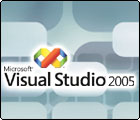
 |

|
| ActiveWin: Reviews | Active Network | New Reviews | Old Reviews | Interviews |Mailing List | Forums |
|
|
|
|
|
DirectX |
|
ActiveMac |
|
Downloads |
|
Forums |
|
Interviews |
|
News |
|
MS Games & Hardware |
|
Reviews |
|
Support Center |
|
Windows 2000 |
|
Windows Me |
|
Windows Server 2003 |
|
Windows Vista |
|
Windows XP |
|
|
|
|
|
|
|
News Centers |
|
Windows/Microsoft |
|
DVD |
|
Apple/Mac |
|
Xbox |
|
News Search |
|
|
|
|
|
|
|
ActiveXBox |
|
Xbox News |
|
Box Shots |
|
Inside The Xbox |
|
Released Titles |
|
Announced Titles |
|
Screenshots/Videos |
|
History Of The Xbox |
|
Links |
|
Forum |
|
FAQ |
|
|
|
|
|
|
|
Windows XP |
|
Introduction |
|
System Requirements |
|
Home Features |
|
Pro Features |
|
Upgrade Checklists |
|
History |
|
FAQ |
|
Links |
|
TopTechTips |
|
|
|
|
|
|
|
FAQ's |
|
Windows Vista |
|
Windows 98/98 SE |
|
Windows 2000 |
|
Windows Me |
|
Windows Server 2002 |
|
Windows "Whistler" XP |
|
Windows CE |
|
Internet Explorer 6 |
|
Internet Explorer 5 |
|
Xbox |
|
Xbox 360 |
|
DirectX |
|
DVD's |
|
|
|
|
|
|
|
TopTechTips |
|
Registry Tips |
|
Windows 95/98 |
|
Windows 2000 |
|
Internet Explorer 5 |
|
Program Tips |
|
Easter Eggs |
|
Hardware |
|
DVD |
|
|
|
|
|
|
|
ActiveDVD |
|
DVD News |
|
DVD Forum |
|
Glossary |
|
Tips |
|
Articles |
|
Reviews |
|
News Archive |
|
Links |
|
Drivers |
|
|
|
|
|
|
|
Latest Reviews |
|
Xbox/Games |
|
Fallout 3 |
|
|
|
Applications |
|
Windows Server 2008 R2 |
|
Windows 7 |
|
|
|
Hardware |
|
iPod Touch 32GB |
|
|
|
|
|
|
|
Latest Interviews |
|
Steve Ballmer |
|
Jim Allchin |
|
|
|
|
|
|
|
Site News/Info |
|
About This Site |
|
Affiliates |
|
Contact Us |
|
Default Home Page |
|
Link To Us |
|
Links |
|
News Archive |
|
Site Search |
|
Awards |
|
|
|
|
|
|
|
Credits |

|
Product:
Visual Studio 2005 Codename "Whidbey" Enterprise Developer
Edition Alpha |
Windows Forms 2.0
|
Table Of Contents |
Windows Forms is the smart client application development platform. Newly added controls such as the DataGridView, the MaskedTextBox edit control, the Sound Player control, the Web Browser control and the Active Document Host control which mirror some functionality lost in the migration path from Visual Basic 6.0 controls to .NET. There are also efforts regarding the look and feel of Office 2003 and Windows XP, now controls render with visual styles by default. There is also a new family of controls called ToolStrips which provide renderers customization, in case you do not like the default renderer's style.
I found quite enjoyable the new resource editor and the application properties window, both feature a Windows Media Player look and feel and it is simple and comfortable to work with them.
The starlight technology of Windows Forms is ClickOnce. ClickOnce brings
the simplicity of Web deployment to client applications and also provides
a significant amount of power and customization to the developer and the
administrator by reducing the cost and effort of deploying and maintaining
client applications.
Finally I will showcase the Class Diagram, I was unable to create a Class Diagram from any other project except from a Windows Forms one, I expect to be a limitation of this build. The Class Designer is intuitive and simple to use and provides a quick way of building the skeleton of the application's class hierarchy, however it does not feature even the 50% of the functionality offered by the Rational XDE for Visual Studio .NET.
















